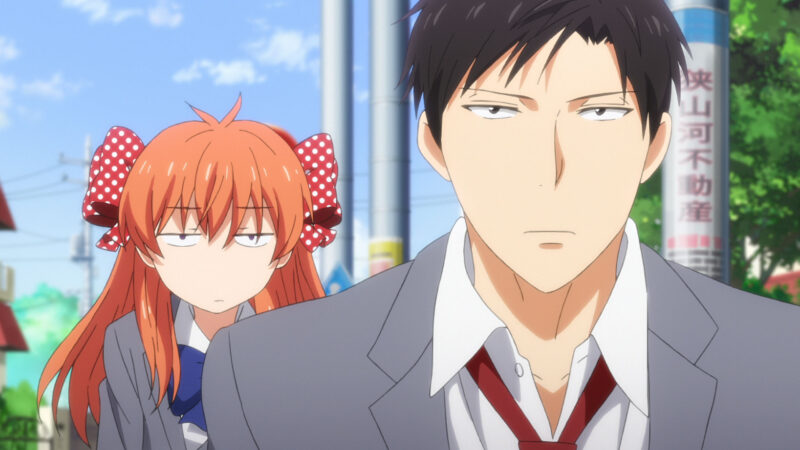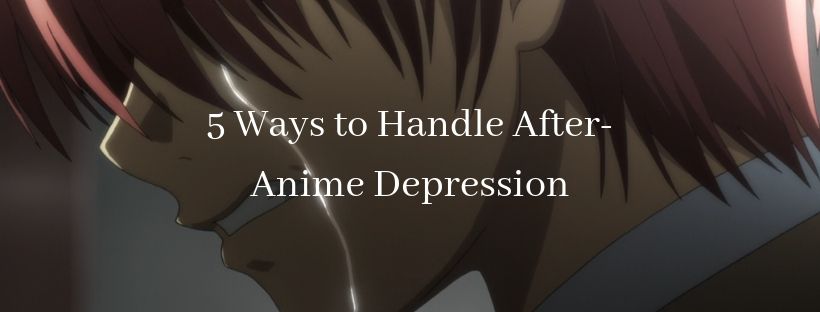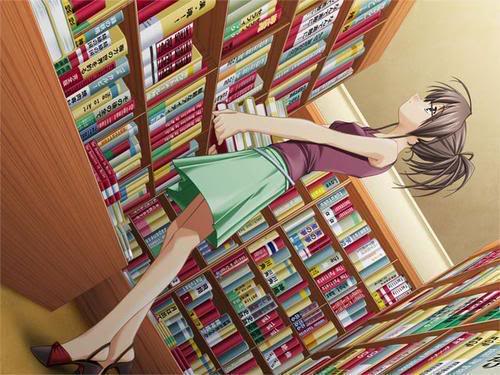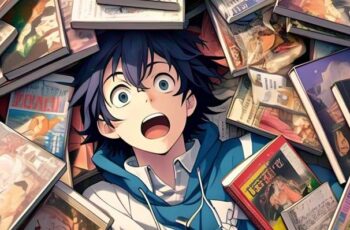
How often do you revisit an anime or a book? With new anime and books coming out at all times, we can get stuck on the new-and-shiny. But rewatching anime and rereading books can offer a deeper appreciation for something you enjoyed in the past. Of course, it can also lead you to ask “why did you like this?” While the book and anime doesn’t change, we do. We have different experiences that shift our perceptions of a story. We can become more aware of messages that we missed or hadn’t given much thought. Or aspects that resonated with you won’t resonate with where you are now.
We aren’t often aware of how we changed. We have the feeling of continuity with ourselves. After all, we are still who we are. But when you revisit a book or anime, you can realize you aren’t who you thought you were. Your differing reaction–whether it is more or less enjoyment–comes from how you’ve changed since you last spent time with the story. It can act as a mirror to reveal aspects you may not have noticed. For example. when I’ve revisited Samurai Champloo (perhaps my favorite anime), I’ve noticed how often the characters moved on after establishing a relationship with a supporting character. It sounds obvious. After all, Samurai Champloo is a road story. But it struck me. It struck me hard because I had experienced the same since I had last viewed the show. I had left many people and relationships behind (or I was the one left behind in many cases!). The transience of relationships, no matter the type, felt like a revelation. Sure, I had known it. After all, I study Zen. But while I watched Samurai Champloo, I felt it. I felt it through the mirror the anime provided.
Likewise, I’ve been revisiting Terry Brook’s Shannara series. Some of what excited me about the early books, no longer resonated. In fact, many of the characters felt flat. Part of this was because I had read a wide variety of books since I first read the Sword of Shannara. My idea of characters had changed, as had my expectations. I still enjoyed the story. I could see how the later stories in the series connected to it. However, it didn’t feel the same as when I first read it as a teen. I had changed.

Rewatching and rereading favorites can be uncomfortable, especially when you realize you no longer like the story. I no longer liked Wizard’s First Rule by Terry Goodkind or the Sword of Truth series when I revisited it. I had devoured the books, but when I revisited them, I found the political messages too distracting. Too loud. I hadn’t noticed them before, and they didn’t jive with my own. Now, I don’t have a problem entertaining differing views. I try to do so often. But the way the messages contrasted with the fantasy world didn’t work for me any longer. I have nothing against Goodkind. I had changed.
C.S. Lewis is famous for rereading books many times. Here are a few of his quotes:
I can’t imagine a man really enjoying a book and reading it only once.
It is a good rule after reading a new book, never to allow yourself another new one till you have read an old one in between.
Despite C.S. Lewis’s views, revisiting can be risky. It’s discouraging to no longer like a favorite. I had revisited my favorite childhood show The Super Mario Super Show! last year or so. And wow that show hurt. Children’s shows are rarely good, but this was on a a charmingly terrible and painful level of bad. Charming only because of my nostalgia goggles. Of course, as an adult (when did that happen?) I hadn’t expected to enjoy the show. But revisiting underlined how I can’t return to childhood. It revealed the gulf of change that happens to us as we age and experience life. Feeling that gulf proved valuable. It brought perspective while still providing a connection to my old childhood curiosity and play. As we continue to age, we put more distance between the old person and the current. The current person will also fade. We will age out of some things, and that is okay. This doesn’t diminish the importance of the story we used to enjoy. It played a vital role at that time, and we still carry that importance and lesson. The story may have supported us when we are in a dark time. The story may have taught us a vital life lesson that we didn’t become aware of until a decade later, and even then not be aware of the source for that knowledge. Only when we revisit the story do we realize that this is where we learned that useful, perhaps even saving, lesson.

Stories define us. We hunger for them, including revisits. Stories have a shelf life for each of us. Sometimes they expire. Sometimes we aren’t ready for them. Revisiting can show us when the story has expired for us, when we’ve moved on. It can also show us when we are ready for the story, or a part of the story we hadn’t noticed. Yes, anime is entertainment, and anime is, admittedly, often shallow entertainment. Let’s just face that fact; books are often shallow entertainment too. The best-selling book genre is romance. Anime can act as a mirror for where we once were when we revisit a favorite. Even foundational texts from ancient civilization has low-brow, entertaining moments. the Iliad has its own version of fan service, yet the Greeks and Romans held it up as a text to learn from. Somewhere in modern life we’ve moved away from the idea that stories matter with how they shape us. We’ve tossed aside a key method of education that stretches back to the dawn of humanity and our oral tradition of stories in favor for “read and regurgitate” methods of education. Stories allow us to embed lessons deep inside us, forming frameworks that holds information in our minds and hearts. Whenever we revisit a story, we reaffirm and reconstruct this framework, shifting bricks from other sources into place. For religious people, their sacred book or tradition serves this purpose. This wisdom literature provides endless lessons despite the static nature of the stories, songs, proverbs, and other genres. Secular stories, in turn, inform readings of sacred literature and, of course, the reverse stands true. Most of this happens beyond our awareness. But once we become aware of the process, we can direct it or, at the least, get more from each revisit.
People have asked me why I study anime. Anime is just another way to tell a story, to connect and convey ideas. It’s another way to build a framework for learning. Spice and Wolf may not be the Iliad or the Kojiki, but it helped me think differently about relationships and how to write character dialogue in my own fiction. Each time I revisit Spice and Wolf I relearn the lessons and come away with different ideas. So too with other stories I revisit. Some people study film for the same reasons. Others study books or songs. My point is so critical that I have to repeat it here: All stories matter. They resonate with different people in different times of their lives. Rewatching and rereading provides a way to assess ourselves and how we’ve changed. Even shallow entertainment can do this. We can only think with the patterns and information we feed ourselves. A junk diet leads to junk thinking (and anime offers a lot of junk food if you aren’t careful). A little junk food won’t hurt you, but if that is all you consume, can you expect yourself to think in a nuanced way?
This article begins a series discussing the stories I’ve revisited since I first started watching and writing about anime. Some of these stories I’ve revisited regularly, like Spice and Wolf and Samurai Champloo. Others I’ve only seen once, like Another and Omamori Himari. Revisiting these one-time watches made me think a bit differently about anime and stories and how we relate to them. Each article will share a few insights that I hope you will find helpful.



